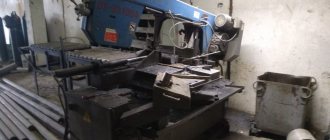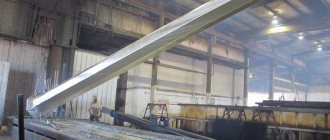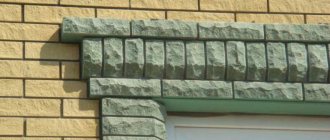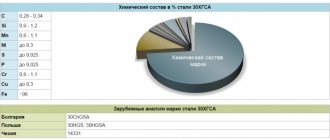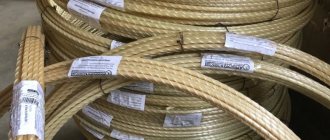A universal product for minor household repairs is Poxipol glue. It is used to connect almost all materials: wood, metal, ceramics, rubber, glass, some types of plastic and concrete. "Poxipol" is suitable for repairing children's toys. Another purpose of the composition is cold welding. It is used to seal cracks and holes. What is special about the product and how to use it correctly?
Peculiarities
The product produced by Uruguayan is called cold welding, which explains the principle of its action - when gluing surfaces, there is no need to heat them.
Poxypol - A two-component adhesive based on epoxy resin, after drying, creates a reliable seam, which can subsequently be subjected to various types of processing, after which it will not lose its strength. In order to form a reliable seam, it is enough to provide rest to the processed materials, as well as to eliminate any vibration when the seam hardens.
Main properties of Poxipol glue:
- high adhesive resistance to moisture, oils and acids;
- the absence of heating does not deprive the materials being bonded of their strength characteristics;
- even the smallest layers of application ensure a strong connection of parts;
- quite elastic;
- weather resistant;
- cold welding creates a strong seam even if the separated pieces do not have a clear configuration.
The glue does not contain solvents and has adhesive properties. To speed up the hardening process, anhydrides or polyamines can be used.
Objective reviews
It is very popular among car enthusiasts. It was noted that the glued parts hold securely in all weather conditions. The reviews are enthusiastic, there are no shortcomings, with rare exceptions. High price. But the point is, he can glue things that others cannot. Therefore, at a critical moment it can help out a lot. Also durable, reliable, quick to set.
Not really suitable for plastic. One of the disadvantages is when it falls off from strongly expanding parts when heated. After all, it is known that advertising exaggerates the quality of a product. Therefore, before the main gluing, conduct a small trial experiment.
Areas of use
Most often used for repairing various devices, fixing parts, filling holes, restoring the integrity of various surfaces.
Materials that can be glued with Poxypol:
- plastic;
- concrete;
- metal;
- wood;
- ceramics;
- rubber.
This list is not limited to the listed materials, however, the adhesion when connecting other surfaces may not be high enough.
Poxypol for aluminum is well suited for gluing aluminum and its alloys. Metal parts can be glued together if there are no traces of rust on them.
Despite the fact that the use of glue is not completely harmless, it is not recommended for use on food materials or surfaces that have direct contact with food: plates, cups, cutlery.
However, materials in contact with water can be cold welded. For this reason, this adhesive is widely used in the repair of fuel tanks, ships, ships, boats, and also cars. In addition, it is often used in the restoration of furniture, doors and windows.
What can you glue?
The dense structure and the ability to be coated with paint make the adhesive convenient for use in the household. Poxypol is used to glue water pipes, taps, car gas tanks and various toys, garden equipment and home furnishings.
Poxypol can be used to glue cracks in metal
There are precedents when Poxypol was used to repair cars, as well as to seal holes in the bottom of a boat. They even use it to repair concrete-based floors and fill cracks and potholes. As an approximate consumption, you should proceed from a value of about 300 grams per square meter.
Poxipol composition and release forms
The glue comes in the form of two tubes that must be mixed before use. The first contains its base - epoxy resin and fillers, and the second - trimethylamine, polymercaptan, modifying substances and more.
There are two main forms of release:
- Poxypol is transparent. Available in red packaging, in a tube of 7 ml. It is a medium-thick mass for mixing in a special container. This form of release allows you to block the transmission of electrical waves (acts as a dielectric), which significantly expands the scope of its application.
- Matte. Blue packaging, 35 ml tube. Most often used for metal. It is a plasticine-like composition that can be smeared manually and used to repair damage and defects. The color of this glue is usually white, gray or metallic.
Kinds
Poxipol is available in two forms. Depending on the type of glue, the scope of application of this product changes.
Ordinary
The usual composition comes in a blue box. The tubes contain a plasticine-like mass designed to eliminate defects on metal. The color of the material is gray-brown or white.
Transparent
The product comes in red packaging. This composition has a less dense consistency. Unlike the previous one, transparent glue has dielectric properties. That is, this type of Poxipol can be used to connect parts that conduct current.
Technical characteristics of poxypol
Poxypol creates a strong connection, similar to cross-linking in metal welding. It is easy to apply and does not shrink once it hardens or lose its shape.
Specifications:
- maintains temperatures up to +120 °C, does not undergo deformation when exposed to cold temperatures down to -40 °C;
- connection force is 993 N;
- shear stress – 22 MPa;
- Complete drying takes 1 hour;
- The seam acquires maximum strength after 24 hours, when the restored product can be used for its intended purpose;
- 48 hours after application, hardness on the Shore scale is 76-78 D;
- glue consumption per 1 m² - 200-300 g;
- density – 1.16-1.6 g/cm³
- tensile strength – 8 MPa.
Due to the absence of solvents in the glue, it does not give off a strong odor, which is why it can be used in the restoration of children's toys.
You cannot glue parts that are under water, but applying glue in a dry environment and immersing the connected parts in water is allowed 10 minutes after the glue has hardened. Contact of the seam with the aquatic environment in which fish live is prohibited, since the glue can release compounds harmful to their life.
Advantages of Poxipol
The main advantages that characterize Poxipol:
- A universal remedy. Most household and technical products made from a variety of materials can be repaired using this mixture.
- Quick preparation of the mixture, easy application and short drying time of the glue. One day is enough for the glue to dry completely.
- Easy to use. All the necessary tools are included with the tubes, and the instructions indicating how to use Poxipol are not particularly complicated.
- The adhesive mixture does not deform, does not shrink and is easily applied to any coating.
- If necessary, you can apply one layer of glue on top of another, which allows you to easily level out any unevenness.
- Transparent glue is almost invisible on any surface; matte glue is available in various colors, which helps you choose the option that suits a particular material.
- Two-component adhesive Poxipol is able to withstand constant exposure to moisture. This property is often useful when repairing plumbing fixtures, boats, boats, and pipes.
- An adhesive joint is not inferior to a welded joint in terms of durability and reliability.
- Poxipol easily withstands low temperatures and retains its technical characteristics under any environmental influences.
- Poxipol glue does not form streaks, so it can be conveniently used on surfaces that are inclined.
- In its dry form, Poxipol epoxy adhesive is not harmful to human health.
- The connection area can be subjected to any processing: drilling, painting, varnishing. No impact will have a significant impact on the strength characteristics of this product.
- The adhesive can dry quickly at room temperature without the need for heat.
- The product is characterized by a viscosity that is sufficient to apply the mixture to a large surface.
How to use
It is recommended to begin your acquaintance and subsequent work with Poxipol glue by reading the instructions, which are necessarily included with the kit.
Preparatory activities before mixing the glue mean processing the surfaces to be glued. To do this, the parts are cleaned of dust and debris, subsequently degreased with a soap solution or a special product and wiped dry. Metal parts can be sanded for better bonding.
For better adhesion, the surfaces to be joined must be dry.
To mix components A and B, it is recommended to use a disposable or unnecessary container, although most kits include a plate and a spatula for preparing the compound.
Having prepared the surfaces for gluing, you can begin preparing the working mixture:
- Squeeze components A (epoxy resin with additives) and B (tertiary amine hardener) in proportions 1:1 onto a plate, cardboard or container.
- quickly but thoroughly mix the composition with a wooden stick or spatula until smooth;
- Remember that the finished mixture hardens after a maximum of 10 minutes.
In order to connect the treated surfaces, you need to apply glue to one of them and press firmly for several minutes. The optimal gluing time is 2-3 minutes. In the next 5-7 minutes, adjustments to the position of the parts are allowed, after which it is necessary to leave the product for a day for the glue to dry completely.
Repair of joints, cracks and holes is carried out using a spatula, with which the glue is applied and distributed over the surface. Recommended room temperature for work is from 18°C to 22°C degrees.
After finishing the work, the plate from the set is easy to clean, just scrape off the remaining glue from it. This way the record will serve many times. If the components from the kit are not completely used, they can be mixed the next time necessary. The main thing is not to mix up the caps when closing the tubes.
Flaws
Among the disadvantages of the product, the following stand out most:
- Insufficient tensile strength of the seam. This disadvantage does not prevent the product from being used when repairing structures that are in constant motion or under increased loads.
- Preparing the mixture must be done independently, which may entail certain difficulties. For example, it is not always possible to measure the required number of components for the optimal ratio. In this case, a violation of the proportion leads to a decrease in the strength of the connection.
- The use of Poxipol is unacceptable with materials such as Teflon, polypropylene or polyethylene. Contact of these materials with cold welding leads to their deformation and destruction.
- The glue is unsuitable for use in production since its melting point is 120 °C. However, this is enough to use Poxipol in everyday life.
- When released into the aquatic environment, it releases toxins. Therefore, the glue is not suitable for the restoration of aquariums for keeping fish and other creatures, as well as structures that are located in close proximity to natural bodies of water.
- The prepared mixture does not have a long shelf life. After mixing the components, the mixture hardens quickly.
- Available in small packages. This disadvantage can be significant during large-scale repair work.
- Glue produced abroad is much more expensive than domestic analogues.
However, when repairing household items, car parts or plumbing parts, these disadvantages do not always play an important role. For this reason, Poxipol continues to be a sought after product for use in a variety of applications.
Price
As for the price of paxipol, it is affordable for everyone. The fact is that the price of poxypol is based on the volume of material. A variety of goods with a volume of 14 ml can be found costing up to 300 rubles. As for large packages, a volume of 70 ml, regardless of the type and area of application, can be found in the price range of up to 1000 rubles.
It is affordable and not so expensive compared to other products offered on store shelves. Poxipol is popular and is almost always in stock. For 2 components this is a very low price.
Instructions for use
Before applying glue to the surface, it must be properly treated, otherwise the penetration of the adhesive deep into the material will be prevented by existing contamination. In order to improve the adhesion of the glue to the surface, you must adhere to the following instructions:
- The coupling parts are thoroughly washed under water and dried. If there are small traces of dirt at the joints, use a brush.
- Good adhesion is ensured by sufficient surface roughness. To ensure strong bonding of glass parts, they must first be coated with contact adhesive.
- The materials are treated with an antiseptic to prevent the formation of mold on the surface of wood products.
By familiarizing yourself with the rules described above, reliable adhesion of various materials is ensured.
Preparation of two-component glue
Before using Poxipol, the epoxy base and hardener are thoroughly mixed with each other to create an adhesive mass. To do this you need:
- Squeeze epoxy resin from the tube marked A onto a flat dish.
- Add the contents from the tube with the letter B to the epoxy in a one to one ratio.
- Mix the components using a special spatula until a homogeneous mass is obtained.
How long does glue dry, useful tips
“Poxipol” dries completely on average in 12 hours, but for safety it is better not to disturb the glued object for about a day. The speed of hardening depends on the properties of the material and environmental conditions: the warmer the room, the slower the mixture dries. After 24 hours, the surface or object is used as usual.
A few recommendations for using the composition:
- Real "Poxipol" is sold only in specialized stores.
- To be sure of the results, follow the instructions on the package.
- The optimal temperature for gluing is +18-22 degrees, however, the glue retains its beneficial properties even at a temperature of +260 above zero.
- Mix the glue components until smooth.
- If the composition needs to be applied in two layers, then proceed as follows: first spread the substance with a layer of 6 mm, wait until it dries, then apply the second layer.
- Use a container for mixing components that you don’t mind throwing away later. And it must also be clean.
- The finished mixture is used within 5-6 minutes due to the rapid chemical reaction of the components. Therefore, it is recommended to first prepare the surfaces and then mix the adhesive.
- If the surface is glossy, it needs to be treated with sandpaper for better adhesion.
Modern technologies, such as Poxipol glue, are displacing the building components we are familiar with from the market. And this is not surprising: the epoxy mixture is universal, easy to use and guarantees long-lasting results.
Precautionary measures
A hardened seam of glue does not cause any harm to humans, however, when working with this product, it is necessary to wear gloves, a protective face covering, and properly ventilate the room.
Epoxy resin can cause irritation and allergies, and direct contact of the hardener with the skin can lead to even more serious consequences. If any components in Poxipol come into contact with the skin, it should be immediately washed with soap and water. If the mixture gets into your eyes or mouth, consult a doctor!
It is not recommended to use an expired product. The use of Poxipol when working with gas devices is strictly prohibited!
Video Poxipol cold welding poxipol instructions for use:
Security measures
"Poxipol", the temperature of use of which should not differ from the recommended one, is used in accordance with safety measures
It is important to avoid contact of the composition with the skin and eyes, as this may cause irritation. If this does happen, then it is necessary to wash the skin with a solution of soapy water.
When cured, the material is non-toxic.
Fast tool welding
The tools are only pushed in and out of the welding press. Setting up new products is a simple exercise. Tools can be changed with a few hand movements. The annoying and time-consuming process of monitoring the temperature of instruments is no longer necessary. This is why the ultrasonic welding process is called the cold welding process.
No cold welding - optically perfect and consistent welds result in high quality, very flat products with consistent optical quality. In thermal resistance welding, the heat is supplied from outside and must therefore be above the melting point of the material. This causes overheating and leads to food depletion.
